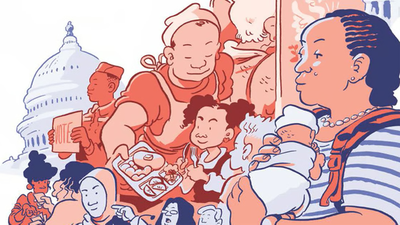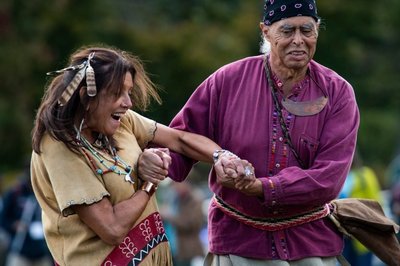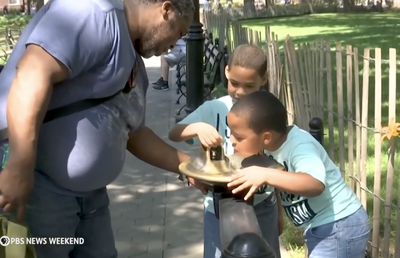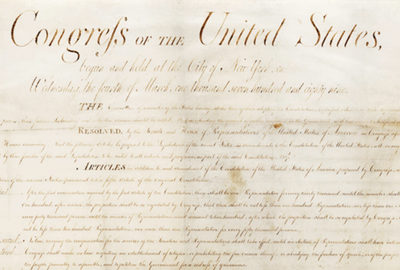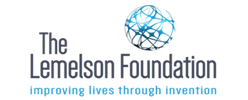For a Google doc version of this lesson, click here. You will be prompted to make a copy.
Overview
The concept of democracy, and its unique form in the United States, can be difficult to understand. This free online comic from the Center for Cartoon Studies will allow students to visualize how the U.S. government works, empowering them to be civically engaged as individuals within this system.
Essential question
How does the American version of democracy work, and how can individuals play a role in this government?
Grade level
8-12
Estimated time
Two 50-minute classes
Materials
You can download the free online comic, "This Is What Democracy Looks Like" here. You will need to provide an email address. Write "0" for the payment and the tip and select the download option.
Objectives
- Students will watch a video and read an online comic to explore the history of democracy in the United States.
- Students will learn more about federal, state and local institutions.
- Students will better understand the U.S. government and their role in it.
Warm-up activity (Day 1)
- Write down your definition of democracy in no more than 3 sentences. How would you describe this type of government? Take a guess if you are not sure – we will review the answers.
- Who has the most power in a democracy? In the U.S. democracy?
- How can anyone, including you, help change or impact those in power?
- Watch the following video and create a bullet list as you watch – how can you change the balance of power? What can YOU do to become more powerful in politics/democracy?
Main activity (Day 2)
Use the Democracy Visualized comic to answer the following questions. (You will need to provide an email address. Write "0" for the payment and the tip and select the download option.)
- Analyze the cover – what do you think/feel about it? What do you see? What is the message?
- Read through the two pages of quotes on pages 1 and 2 in the comic. Which one stuck out to you the most? Which one do you agree with the most? Explain why in several complete sentences.
- Now, reread your answer from #1 in the warm-up activity. How would you redefine democracy in your own words? Write a paragraph that begins with "I believe democracy means…"
- On page 1, take a look at the quote from Bill McKibben – what does this mean to you? Who is your community?
- Who has more of an impact on your life – the federal government (executive, legislative, judicial) or local government (mayor, school board, representatives)? Explain your response.
- Who do you think is the most powerful? The President, Congress, or Courts? Why? Who is supposed to be more powerful?
- Read pages 6-15 in the comic. Now, how would you answer question #6? (Go back and re-read #6)
- Using pages 6-15, what are the powers of Congress? Why are they so important? Who do you think takes power away from Congress?
- Write a paragraph (around five sentences) that explains how the U.S. government’s checks and balances limit the power of each branch of the federal government.
- Read page 16 on state government and write down one takeaway.
- Read pages 17-18 on county government and write down two takeaways.
- Read pages 19-20. What are three issues within the US democracy?
- Read pages 21-22 and write down one reflection.
- Read page 23. What does “Democracy is a WE” mean to you?
- Read pages 24-25. How can you enact change?
- Final reflection – what is your greatest takeaway? Why? Write at least one paragraph as a reflection (minimum five sentences).
- Now put your learning into action - watch one of the following News Hour videos and decide your stance on the issue. Briefly describe the issue and then how you would go about making change based on what you have learned in this lesson.
How the Trump administration is dismantling climate protections
Supreme Court hears case challenging free preventive care coverage
News Wrap: Russia resumes fighting in Ukraine after 30-hour 'Easter truce'
Students can also choose another news topic from the News Wrap video, which features several current stories for the week.
Extension activity(s)
Students can draw their own page of the comic - what would you add? Perhaps a page on something you can do to enact change.
Standards
C3 Framework
D2.His.3.9-12. Use questions generated about individuals and groups to assess how the significance of their actions changes over time and is shaped by the historical context.
D2.His.11.9-12. Critique the usefulness of historical sources for a specific historical inquiry based on their maker, date, place of origin, intended audience, and purpose.
About the lesson author
Tim Smyth is the Eisner-nominated author of Teaching with Comics and Graphic Novels and a high school social studies teacher (MS Reading Specialist), who travels the country giving professional development to educators on the power of teaching with comics. He has been published by many outlets, such as PBS, MacMillan, Scholastic, and others. He shares many resources on his website, Teachingwithcomics.com.
